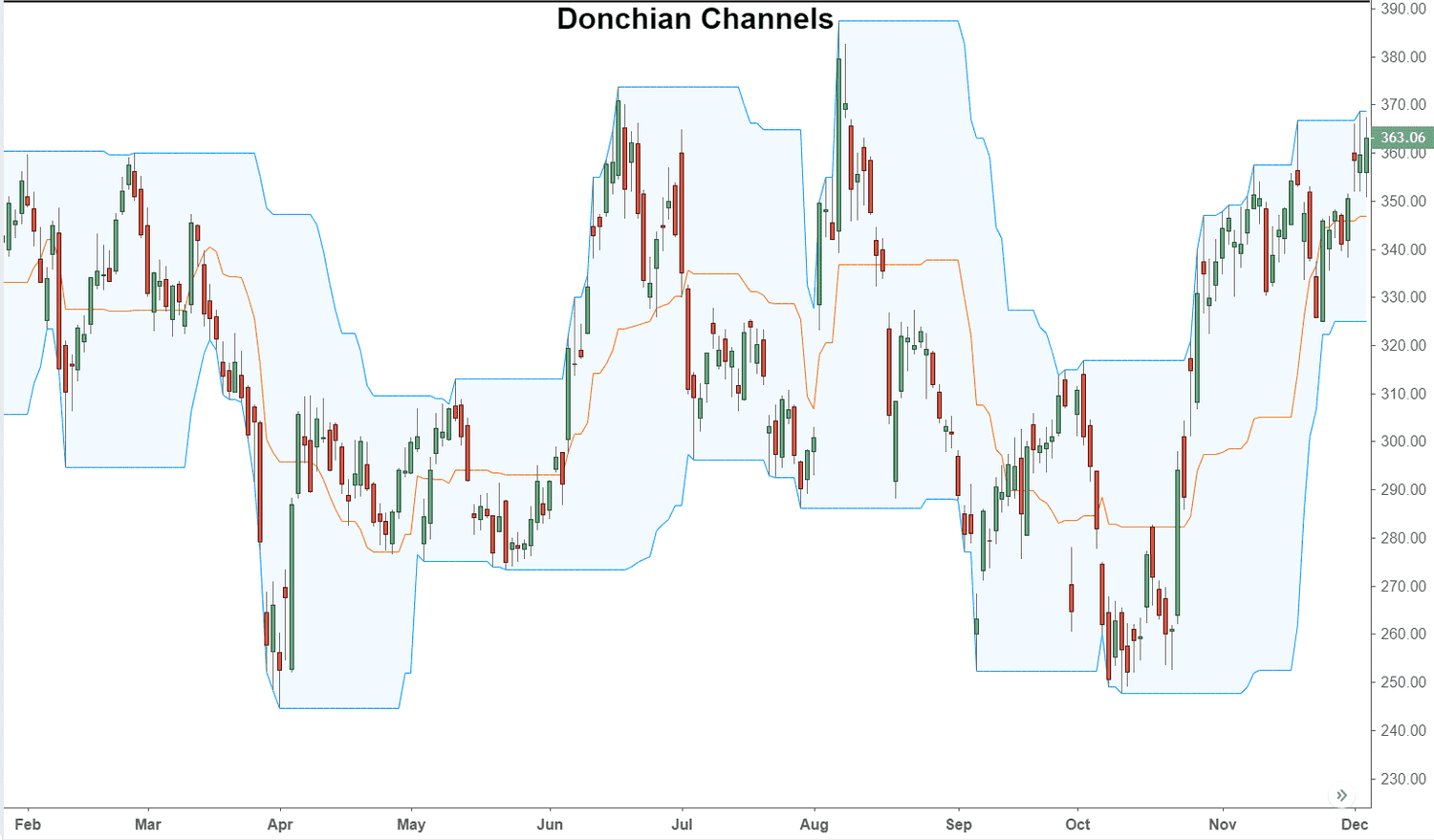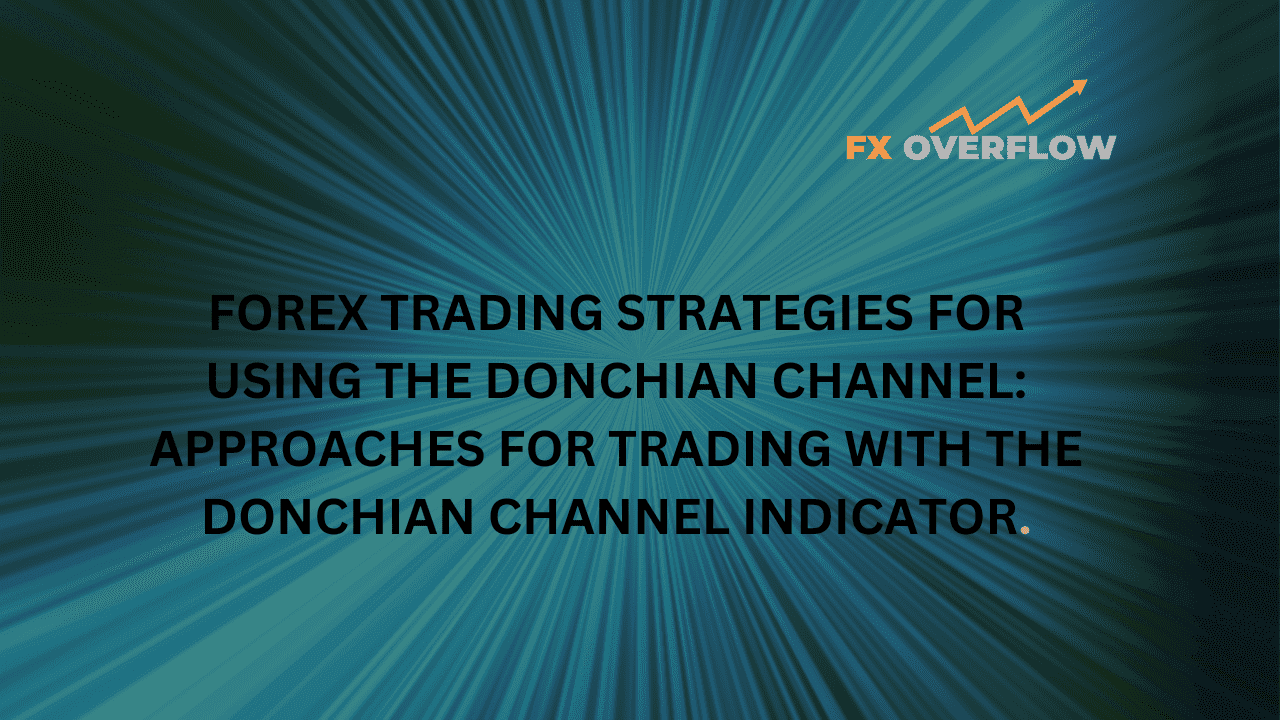Forex Trading Strategies for Using the Donchian Channel: Approaches for Trading with the Donchian Channel Indicator
In the world of forex trading, having a reliable strategy can make all the difference between success and failure. The Donchian Channel, a technical indicator developed by Richard Donchian, is a powerful tool that can provide valuable insights into market trends and potential entry and exit points. This article explores various approaches to forex trading using the Donchian Channel indicator and how traders can harness its potential to make informed trading decisions.

Table Content
I. Understanding the Donchian Channel Indicator
1. Breakout Strategy: Riding the Momentum
2. Trend Following Strategy: Riding the Wave
3. Mean Reversion Strategy: Trading the Range
4. Dual Donchian Channel Strategy: The Best of Both Worlds
II. Footnote
Understanding the Donchian Channel Indicator
The Donchian Channel indicator is essentially a volatility-based channel that consists of three lines: the upper channel line, the lower channel line, and the middle channel line. The upper line represents the highest high over a specified period, the lower line represents the lowest low over the same period, and the middle line is the average of the two. This indicator can be applied to various timeframes, making it adaptable to different trading styles.
1. Breakout Strategy: Riding the Momentum
One of the most popular ways to use the Donchian Channel is the breakout strategy. This approach capitalizes on significant price movements that occur after periods of consolidation or low volatility. Traders identify breakouts when the price breaches either the upper or lower channel line.
For a bullish breakout (price moves above the upper channel line), traders can place a buy order, anticipating that the upward momentum will continue. Conversely, for a bearish breakout (price moves below the lower channel line), a sell order might be considered,
expecting the downtrend to persist.
However, false breakouts can occur, where the price momentarily breaches a channel line but then quickly reverses. To mitigate this risk, traders often wait for a candle to close above or below the channel line before confirming the breakout.
2. Trend Following Strategy: Riding the Wave
Another effective strategy involves using the Donchian Channel to identify and follow trends. In this approach, traders consider the direction of the middle channel line to determine the overall trend. When the middle line is sloping upward, it indicates an uptrend, and when it's sloping downward, it signifies a downtrend.
Traders can enter the market when the trend is confirmed by the Donchian Channel's middle line direction. For instance, in an uptrend, a buy order can be initiated when the price retraces to the lower channel line, anticipating a bounce back up. In a downtrend, a sell order might be placed when the price retraces to the upper channel line.
This strategy aligns with the age-old trading adage: "The trend is your friend." By trading in the direction of the trend, traders increase their chances of capturing profitable price movements.
3. Mean Reversion Strategy: Trading the Range
Contrary to the breakout and trend following strategies, the mean reversion strategy involves anticipating that prices will revert to their average or equilibrium levels. The Donchian Channel can be instrumental in identifying potential turning points in this approach.
When the price extends far above the upper channel line or below the lower channel line, it's an indication that the market might be overbought or oversold, respectively. Traders using the mean reversion strategy might consider taking counter-trend positions in these scenarios, expecting the price to reverse towards the middle channel line.
However, it's important to exercise caution with this strategy, as catching a reversal too early can lead to losses if the trend continues. Confirmation through other indicators or candlestick patterns can help validate potential reversals.
4. Dual Donchian Channel Strategy: The Best of Both Worlds
To enhance the effectiveness of the Donchian Channel, some traders employ a dual Donchian Channel strategy. This involves overlaying two sets of Donchian Channels with different periods on the same chart. For instance, a shorter-term channel (e.g., 10 periods) and a longer-term channel (e.g., 20 periods) can be used together.
When the shorter-term channel crosses above the longer-term channel, it can be a signal to buy, indicating potential short-term upward momentum. Conversely, when the shorter-term channel crosses below the longer-term channel, a sell signal might be generated, suggesting short-term downward movement.
This strategy combines aspects of both trend following and mean reversion approaches, aiming to capture short- to medium-term price movements within the context of a larger trend.
Footnote
The Donchian Channel indicator offers forex traders a versatile tool to navigate the complexities of the market. Whether you're a breakout enthusiast, a trend follower, a mean reversion trader, or someone who prefers a blended approach, the Donchian Channel can be tailored to suit your trading style.
It's important to note that no strategy is foolproof, and risk management should always be a top priority. Traders should consider using stop-loss and take-profit orders to protect their capital and profits. Additionally, combining the Donchian Channel with other technical indicators, such as moving averages, Relative Strength Index (RSI), or MACD, can provide a more comprehensive view of the market dynamics.
As with any trading strategy, practice, patience, and continuous learning are key. By thoroughly understanding the nuances of the Donchian Channel and regularly refining your approach, you can increase your chances of making well-informed trading decisions and achieving consistent success in the dynamic world of forex trading.











Discussion